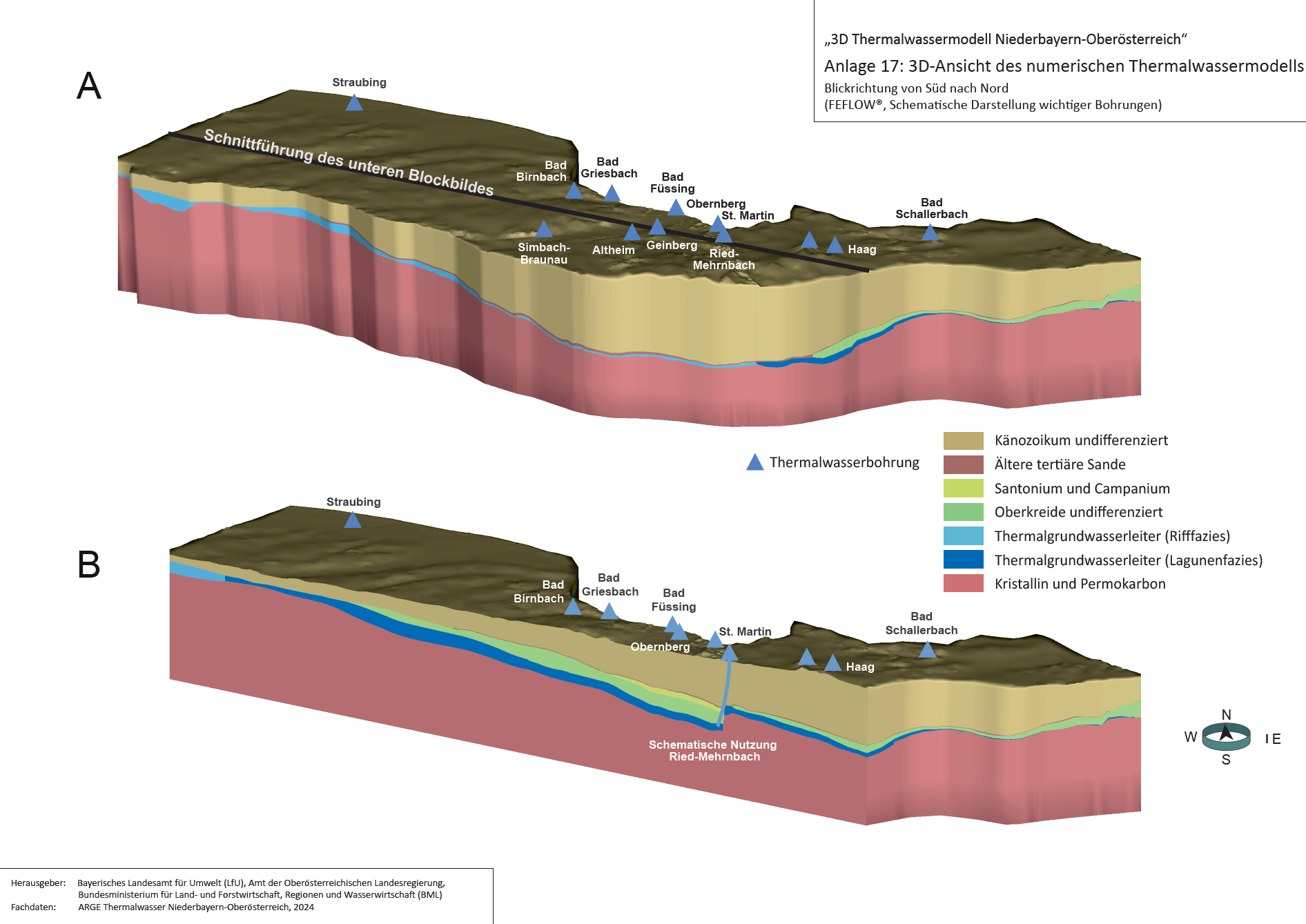New model for the sustainable management of thermal water
GeoSphere Austria has developed a new 3D model for the management of thermal water resources in the Lower Bavaria-Upper Austria region. In future, this will be used to calculate the effects of planned withdrawals in order to guarantee sustainable management.
The Lower Bavaria-Upper Austria region is home to a significant deposit of thermal water in terms of water management. It extends from Regensburg to the area west of Linz. This thermal water has been utilised for many years as healing water and for bathing purposes in spas as well as geothermally for energy production.
As the extraction of thermal water affects the resources of the entire region, the "Permanent Water Commission under the Regensburg Treaty" had a 2D model developed at the end of the 1990s in order to forecast the effects of planned utilisation.
As not all applications could be optimally calculated with the previous model and the technical possibilities have developed significantly in the meantime, the project "Creation of a 3D thermal water flow model in the Lower Bavarian-Upper Austrian Molasse Basin" was commissioned in 2017. The project was carried out by a consortium consisting of GeoSphere Austria, Erdwerk GmbH, Montanuniversität Leoben, RAG Austria AG and the Technical University of Munich.
The clients were the Office of the Upper Austrian Provincial Government and the Federal Ministry of Agriculture, Forestry, Regions and Water Management from Austria and the Bavarian State Office for the Environment from Germany.
The general aim of the project was to create a bilaterally harmonised instrument for planning and assessing water management issues. The aim is to continue to ensure the protection and sustainable utilisation of this limited thermal water resource in a standardised cross-border approach.
"In the first step, we developed a three-dimensional hydrogeological model that represents the conditions of the region in as much detail as possible," says hydrogeologist Gerhard Schubert from GeoSphere Austria. "Based on this conceptual model, a numerical model was created in the second step in order to calculate the effects of water withdrawals quickly and realistically in the future."
The model area covers a strip around 180 kilometres long and 20 to 50 kilometres wide in the border area between Upper Austria and Bavaria.
The data basis for the elaborations was very extensive: "We used information from 138 publications as well as the evaluations of 1,449 boreholes, some of which reached depths of more than 2,000 metres," explains hydrogeologist Schubert, "in addition, extensive material from the databases of the Bavarian State Office for the Environment and the Office of the Upper Austrian State Government was processed and the results of reflection seismic investigations and test results on thermal groundwater from RAG Austria AG were available for the interpretation of the geological structures."
The work was completed in 2024. In initial tests, the new model demonstrated its good forecasting ability with regard to the impact of changes in abstraction on the thermal water supply.
The lockdown during the Covid pandemic in 2020 provided a special opportunity for a very realistic test. "Many thermal baths were closed for some time at that time and had significantly reduced the production of thermal water," says Gerhard Schubert from GeoSphere Austria, "and extensive water data was available that had not yet been included in the calibration of the numerical model. This data was used to show how realistically the new forecasting model can be used to calculate the pressure changes caused in the region."
The project also provided some new hydrogeological findings. Originally, the flow time of the thermal water from the catchment area in Bavaria to Bad Schallerbach in Upper Austria was estimated to be around 5,000 years. More recent investigations have now revealed a significantly longer residence time of the water in the thermal aquifer of several tens of thousands of years.
These results confirm the limited nature of the available usable thermal water resources. They make it clear that the water management conditions and thus the utilisation possibilities can only be maintained if the thermal water is used sparingly and in the sense of sustainable management.
Translated with DeepL.com (free version)

